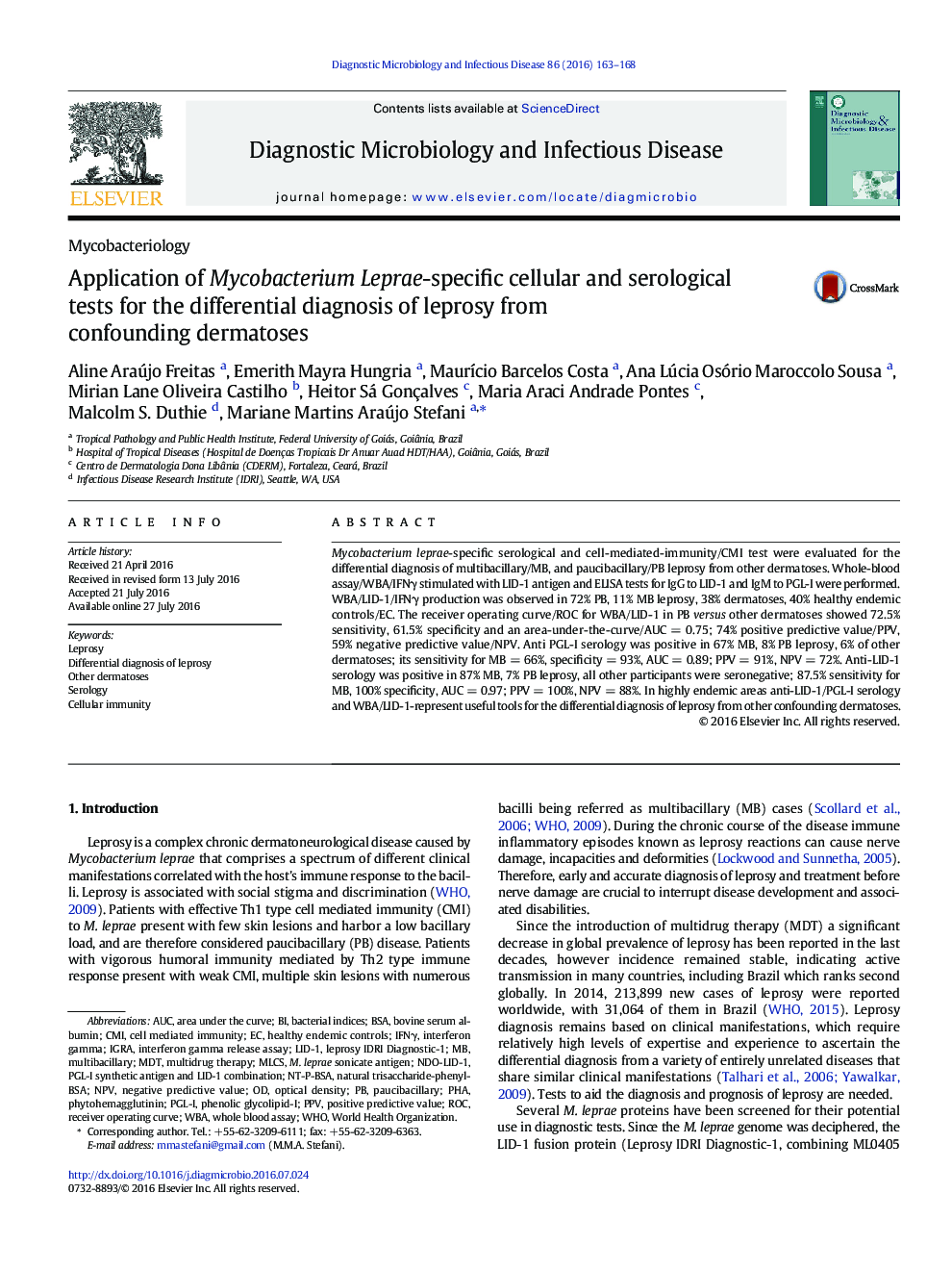| Article ID | Journal | Published Year | Pages | File Type |
|---|---|---|---|---|
| 3346761 | Diagnostic Microbiology and Infectious Disease | 2016 | 6 Pages |
•WBA-LID-1 was able to discriminate PB leprosy from other dermatoses.•Serology to LID-1 and PGL-I discriminated MB leprosy and other dermatoses.•WBA-LID-1 test showed a reasonable sensitivity with limitations in its specificity•LID-1 serology showed great specificity and sensitivity which supports its utility•WBA and serology to LID-1 can help clinicians in the differential diagnosis of leprosy
Mycobacterium leprae-specific serological and cell-mediated-immunity/CMI test were evaluated for the differential diagnosis of multibacillary/MB, and paucibacillary/PB leprosy from other dermatoses. Whole-blood assay/WBA/IFNγ stimulated with LID-1 antigen and ELISA tests for IgG to LID-1 and IgM to PGL-I were performed. WBA/LID-1/IFNγ production was observed in 72% PB, 11% MB leprosy, 38% dermatoses, 40% healthy endemic controls/EC. The receiver operating curve/ROC for WBA/LID-1 in PB versus other dermatoses showed 72.5% sensitivity, 61.5% specificity and an area-under-the-curve/AUC = 0.75; 74% positive predictive value/PPV, 59% negative predictive value/NPV. Anti PGL-I serology was positive in 67% MB, 8% PB leprosy, 6% of other dermatoses; its sensitivity for MB = 66%, specificity = 93%, AUC = 0.89; PPV = 91%, NPV = 72%. Anti-LID-1 serology was positive in 87% MB, 7% PB leprosy, all other participants were seronegative; 87.5% sensitivity for MB, 100% specificity, AUC = 0.97; PPV = 100%, NPV = 88%. In highly endemic areas anti-LID-1/PGL-I serology and WBA/LID-1-represent useful tools for the differential diagnosis of leprosy from other confounding dermatoses.
